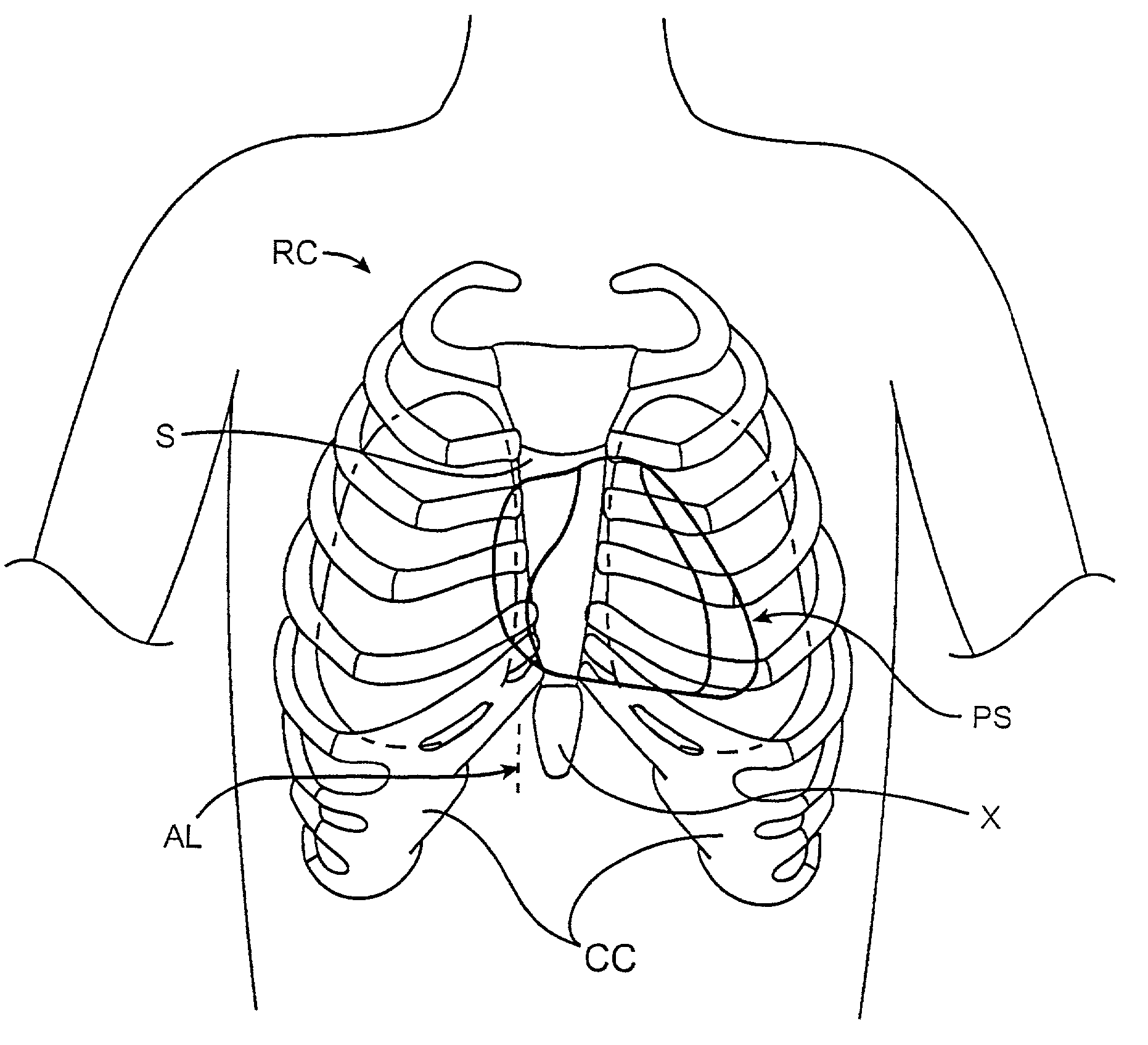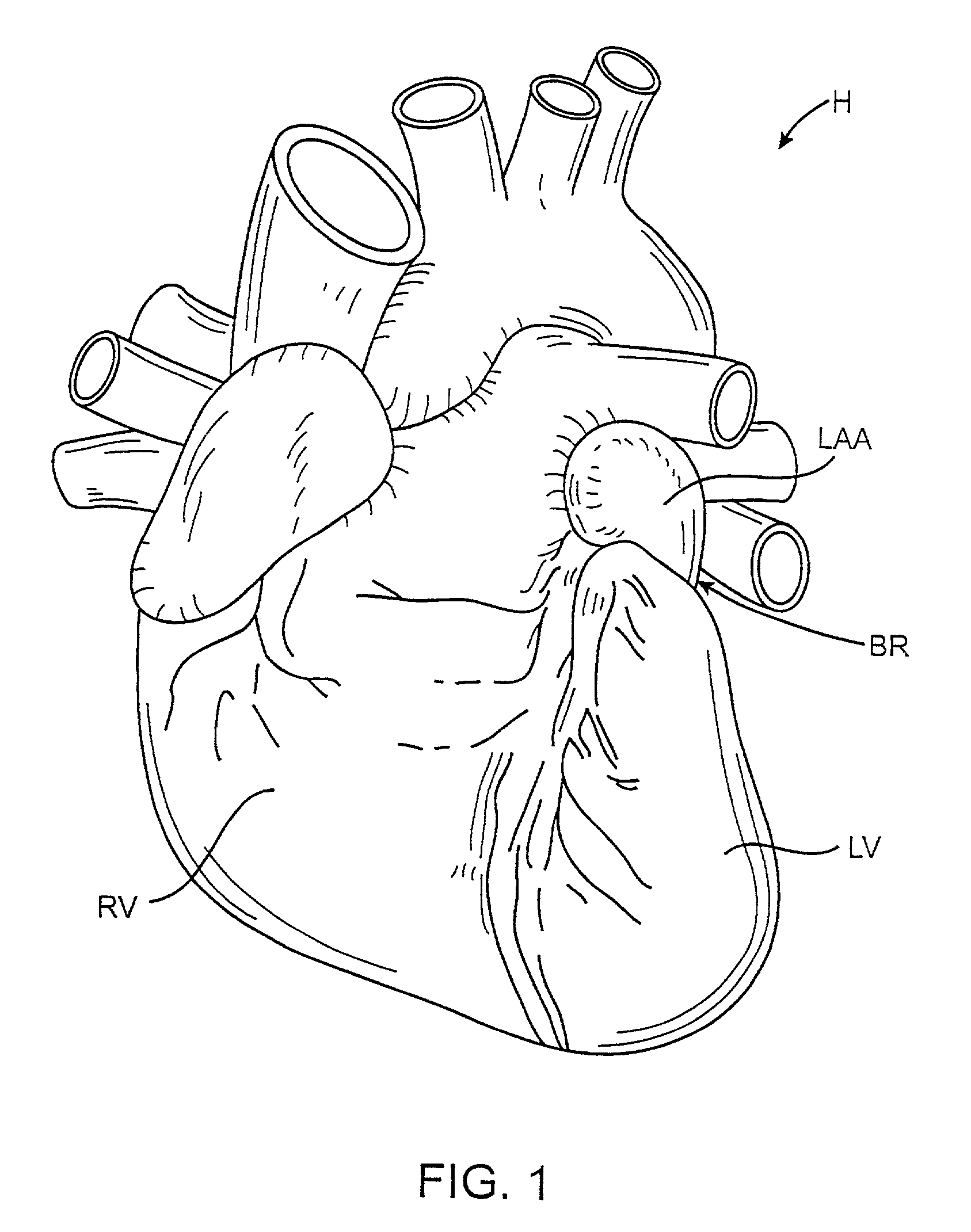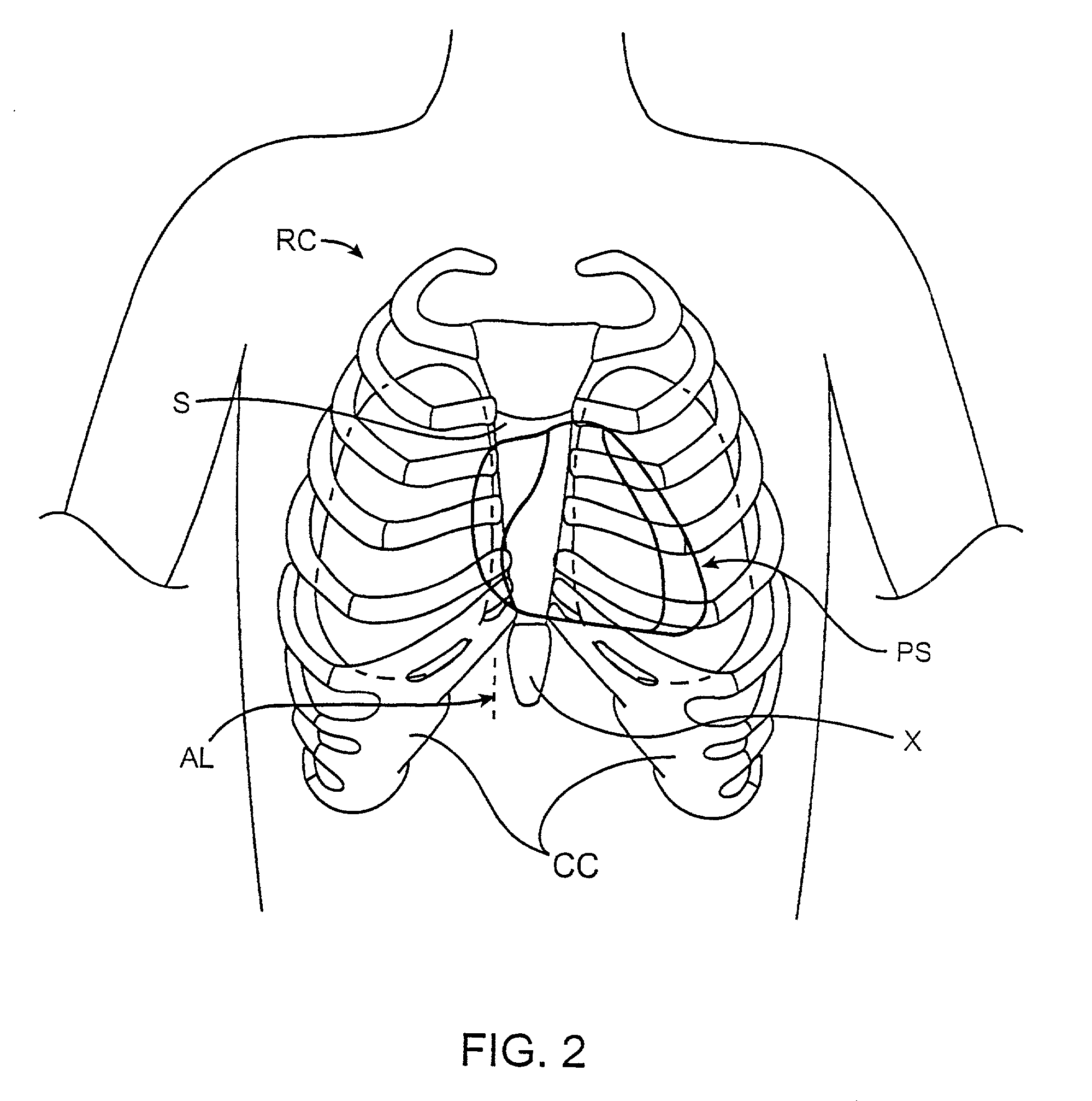Methods and apparatus for transpericardial left atrial appendage closure
- Summary
- Abstract
- Description
- Claims
- Application Information
AI Technical Summary
Benefits of technology
Problems solved by technology
Method used
Image
Examples
Embodiment Construction
[0033] FIG. 1 is an anterior view of a heart illustrating the right ventricle RV, the left ventricle LV, and the left atrial appendage LAA. The methods and apparatus of the present invention are intended to place a closure structure over or otherwise close off the base region BR of the left atrial appendage. By closing off the base region BR, the exchange of materials between the left atrial appendage LAA and the left atrium LA will be stopped. Thus, the release of emboli from the left atrial appendage into the left atrium will be stopped.
[0034] Referring now to FIG. 2, the heart is located within the pericardial space PS located beneath the patient's rib cage RC. The sternum S is located in the center of the rib cage RC and terminates at its lower end in the xiphoid X. On either side of the xiphoid are the costal cartilage CC, and the percutaneous access points for performing the procedures of the present invention will be located beneath the rib cage RC, and preferably between the...
PUM
 Login to View More
Login to View More Abstract
Description
Claims
Application Information
 Login to View More
Login to View More - R&D
- Intellectual Property
- Life Sciences
- Materials
- Tech Scout
- Unparalleled Data Quality
- Higher Quality Content
- 60% Fewer Hallucinations
Browse by: Latest US Patents, China's latest patents, Technical Efficacy Thesaurus, Application Domain, Technology Topic, Popular Technical Reports.
© 2025 PatSnap. All rights reserved.Legal|Privacy policy|Modern Slavery Act Transparency Statement|Sitemap|About US| Contact US: help@patsnap.com



